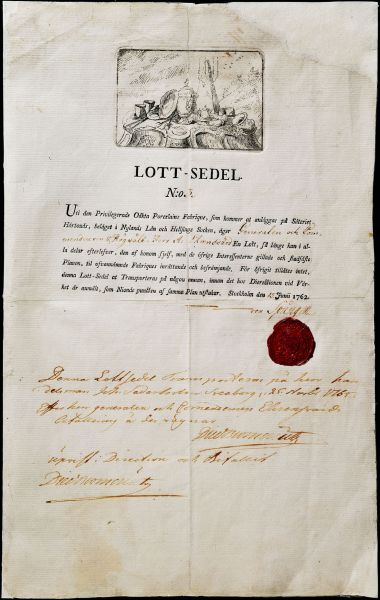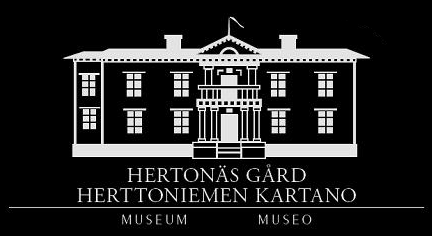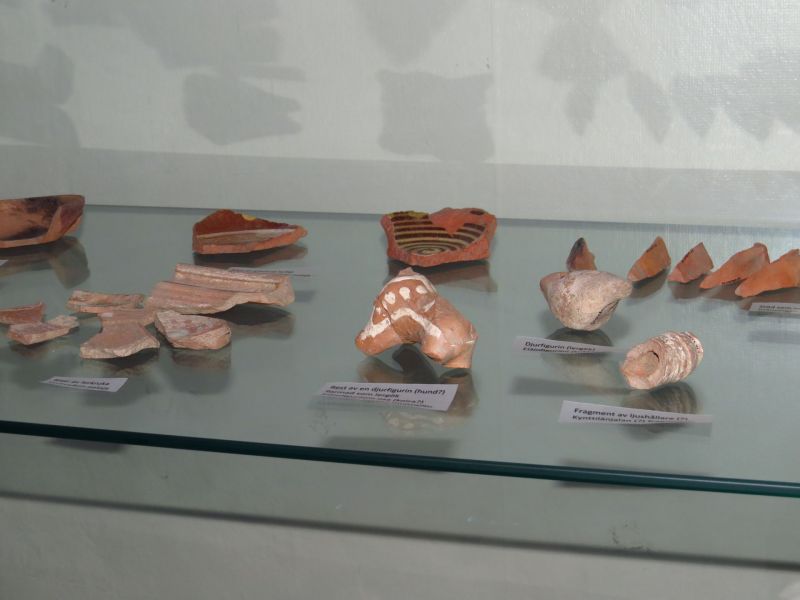Porcelain originated in China, and began to appear in Europe from the 16th century onwards via trade routes to East Asia. In the 1600s, imports took off and many wealthy Europeans boasted large collections. Gradually, Europeans began to try to make porcelain themselves, with varying success. It turned out to be difficult to imitate Chinese porcelain, so instead they often focused on tiles and faience, the latter being a kind of earthenware that came to be camouflaged with white pewter glaze to resemble porcelain. The technology for producing faience originated in the Middle East. Hertonäs Manor also entered the ceramics business, and the manor's ceramics factory was in operation for almost 100 years.

Lottery ticket: a share certificate (share number 5) for the factory
The factory began as Finland's first limited company and was founded in 1762 by Bengt von Spången, the owner of Hertonäs Manor from 1761 to 1777, together with eleven other men from the upper class. The company consisted of 30 shares, or lottery tickets, as the owners came to call them. A third came to be owned by von Spången himself. The company's business was to produce "oäkta porslin" (non-genuine porcelain), and a ceramics factory was established on the exact site where Hertonäs Manor stands today. The manor house at the time was located a few hundred metres to the south and would remain so until Vice-Admiral Carl Olof Cronstedt bought Hertonäs Manor in the early 1800s and converted the factory's kiln house into a new manor.
During the time period when the factory was in operation, the term porcelain included not only what we today define as porcelain, but also faience and flint wares were included in the definition. The latter two could also be called non-genuine porcelain, while fine or real porcelain meant what we call porcelain today. The Hertonäs manor factory came to produce simple ceramics, such as kiln tiles and vessels, in the 1700s and 1800s. von Spången was also given permission to produce faience, but there are no indications of faience manufacturing taking place.
However, Sweden's first ceramic factory, Rörstrand, is older than Hertonäs Manor's ceramics works, and was founded in 1726. However, real porcelain did not begin to be produced in Sweden until the 1760s, i.e. at the same time as the faience factory in Hertonäs was founded. And then it was not Rörstrand but the Marieberg factory, founded in the 1750s, that was responsible for the production of genuine porcelain.
Shards: fragments from Herttoniemi Manor's ceramics works
In the 1810s, Cronstedt moved the Hertonäs Manor's ceramics to the old main building, where operations continued until 1845. At Hertonäs Manor, we currently exhibit fragments from the factory that were found during an excavation in 2005-2007.
Daniela Fougstedt works as a guide at Hertonäs manor museum.
Literature:
S. Aalto, S. Gustafsson och J-M. Granqvist, Fästningsstaden, Helsingfors och Sveaborg 1721-1808, Helsingfors 2021.
S. Backman, Hertonäs gård. Från säteri till museum, Helsingfors 2017.
H. Dahlbäck Lutteman, Svenskt porslin: fajans, porslin och flintgods 1700-1900, Västerås 1980.

